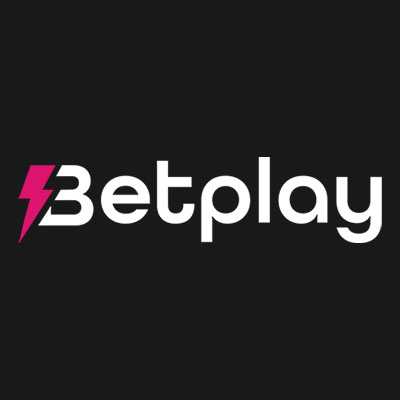What is Cloud Mining?
Cloud mining lets you mine cryptocurrency (e.g., Bitcoin, Ethereum) without owning physical hardware. Instead, you rent hash power from a remote data center and receive a share of the mined coins.
How It Works
-
You pay for a mining contract (fixed term or lifetime).
-
The provider allocates hash power from their machines to you.
-
You earn rewards (minus fees) based on your rented power.
Why should you avoid Cloud Mining?
Cloud mining is often associated with scams but there is much more to it. iPlayCrypto has gathered for you the main issues to be prepared for anything.
1. Ponzi Schemes (Most Common)
Many cloud mining platforms operate as Ponzi schemes, where they use funds from new investors to pay fake "returns" to earlier users instead of generating real mining profits. These scams often lure victims with promises of unrealistically high guaranteed returns, such as "200% yearly profit," and avoid providing verifiable proof of their mining operations. A notorious example is BitClub Network, which was shut down by the SEC after defrauding investors of millions. Always be skeptical of platforms that refuse to disclose their mining facilities or offer returns that seem too good to be true.
2. Fake Hash Power (No Real Mining)
Some cloud mining services claim to allocate hash power to users but don’t actually own any mining hardware. Instead, they simulate fake mining activity on their dashboards while pocketing deposits. A major red flag is the lack of real-time mining statistics or transparency about their data centers. Legitimate providers will openly share details like pool participation, hardware specs, and facility locations—if a company avoids these questions, it’s likely a scam.
3. Hidden Fees & Unrealistic Contracts
Even seemingly legitimate cloud mining services often impose hidden costs that destroy profitability. Maintenance fees can silently consume 30–50% of earnings, while contracts may include clauses that penalize early termination. Some providers offer "lifetime contracts" that abruptly end when mining becomes unprofitable, leaving users with nothing. Always scrutinize the fine print and calculate net returns after fees—most cloud mining contracts are structured to benefit the provider, not the investor.
4. Exit Scams (Sudden Disappearance)
A common tactic is the exit scam, where a cloud mining company shuts down overnight after collecting enough deposits. Warning signs include delayed withdrawals, ignored support tickets, and team members with fake identities (e.g., stolen LinkedIn photos). Before investing, check how long the platform has operated and whether users report successful withdrawals. If a company disappears without warning, recovering funds is nearly impossible.
5. Misleading Profit Calculations
Cloud mining scams frequently use deceptive profit calculators that ignore real-world factors like rising mining difficulty and crypto price volatility. They may advertise "free trials" to hook users into long-term contracts or display inflated projections that never materialize. Always cross-check estimates with independent mining calculators (like WhatToMine) and assume actual returns will be lower than advertised. If a platform refuses to provide realistic scenarios, it’s likely a scam.
Notorious Cloud Mining Scams
Cloud mining has been plagued by scams since its inception, with many platforms disappearing overnight after collecting millions from investors. Some of the most infamous cases serve as cautionary tales for anyone considering cloud mining today.
BitClub Network (2014–2019) – The $722 Million Ponzi Scheme
One of the largest cloud mining scams in history, BitClub Network promised investors high returns from Bitcoin mining but was actually a massive Ponzi scheme. The founders fabricated mining earnings and paid old investors with money from new ones. In 2019, the U.S. Department of Justice shut it down, charging its operators with fraud. Victims lost over $722 million, and the case remains a stark warning about unrealistic profit claims.
HashOcean (2016) – The Sudden Exit Scam
HashOcean appeared legitimate, offering lifetime mining contracts with "guaranteed" daily payouts. However, after attracting thousands of users, the platform abruptly shut down in 2016, stealing an estimated $3 million in deposits. Its operators vanished, leaving no way for users to recover funds. This scam highlighted the risks of "lifetime" cloud mining contracts.
MiningMax (2017) – The Multi-Level Marketing Trap
MiningMax combined cloud mining with a multi-level marketing (MLM) structure, encouraging users to recruit others for bonuses. Despite claiming to operate massive mining farms, the company never provided proof. In 2017, payouts stopped, and the website disappeared, costing investors tens of millions. The case exposed how MLM tactics can disguise fraudulent mining schemes.
BitPetite (2017) – The "Daily ROI" Scam
BitPetite lured users with promises of 2% daily returns, an impossible claim for real mining. After operating for just a few months, it suddenly closed, taking $4.7 million in deposits. Investigations later revealed it was a classic Ponzi scheme with no actual mining operations.
GHash.io (2014) – The 51% Attack Controversy
While not a scam in the traditional sense, GHash.io became infamous when its Bitcoin mining pool briefly controlled over 51% of the network’s hash rate, raising centralization concerns. Though it didn’t steal funds, the incident showed how cloud mining could threaten blockchain security. The platform later shut down due to backlash.
Recent Scams (2023–2025) – Fake AI Mining & Telegram Bots
Newer scams now exploit AI hype, with platforms like "AIMining" and "QuantumMining" claiming to use "AI-powered algorithms" for supernatural profits. Many are just frontends for Ponzi schemes. Additionally, Telegram-based mining bots (e.g., "BTC Click Miner") promise free Bitcoin but steal deposits or spread malware.
How to avoid Cloud Mining scams?
While you can never be 100% certain, there are a few things you can look for which shall minimize the chances of you getting scammed.
-
Check Transparency
-
Realistic Profit Claims
-
Avoid "guaranteed returns" (real mining is volatile).
-
Compare yields with WhatToMine.com or CoinWarz.
-
-
Legal & Business Info
-
Registered company? (Check govt business databases).
-
Real team? (LinkedIn profiles, not stock photos).
-
-
User Reviews & Complaints
-
Search "[Provider] + scam" on Reddit, Bitcointalk, Trustpilot.
-
Any sudden withdrawal halts reported?
-
-
Contract Terms
-
No hidden fees (maintenance, electricity cuts).
-
No forced lock-ins (can you cancel anytime?).
-
-
Too Good to Be True?
-
Free mining? → Scam.
-
"200% ROI in 3 months"? → Scam.
-
Pay in crypto only? → Risky (no chargebacks).
-
Why should you try Cloud Mining?
Apart from the numerous issues and scams we mentioned above,Cloud Mining still has some advantages over traditional crypto mining. After all, that is why many people still go for it.
1. No Hardware Setup or Maintenance
Cloud mining eliminates the need to buy expensive mining rigs, set them up, or maintain them. You don’t have to worry about hardware failures, overheating, or noisy equipment—everything is managed by the provider. This makes it ideal for beginners or those who lack technical expertise.
2. No Electricity Costs
Since the mining is done remotely, you avoid the biggest expense in traditional mining: electricity. Providers cover the power costs, meaning your profitability isn’t tied to local energy rates. This is especially useful in regions with high electricity prices.
3. Accessibility & Convenience
Cloud mining lets you start mining instantly from anywhere with an internet connection. There’s no waiting for hardware deliveries or dealing with complex setups. Just purchase a contract, and earnings (if any) begin automatically with minimal effort.
4. Scalability
You can easily adjust your mining power by buying larger contracts or diversifying across different coins. Unlike physical mining, you’re not limited by space, hardware availability, or upfront costs—just upgrade your plan as needed.
5. No Resale Hassle
When mining becomes unprofitable, you simply stop renewing contracts—no need to sell used hardware at a loss. This avoids the depreciation and resale challenges that come with owning ASICs or GPUs, which lose value quickly.
Best Cloud Mining Options in December 2025
As of December 2025, the cloud mining industry remains high-risk, with most providers either unprofitable or outright scams. However, a few verified platforms offer relatively safe contracts—though profits are modest and depend on crypto market conditions.
1. Genesis Mining (Most Established)
-
Status: Still operational (one of the oldest, launched in 2013).
-
Offers:
-
Bitcoin (SHA-256) Mining – $250 minimum, ~$0.10/TH daily.
-
Ethereum (Ethash) Staking – If still supporting post-Merge.
-
Current Deal: "Lifetime Bitcoin Mining" at $1,200/TH (check dashboard for exact yields).
2. NiceHash (Hash Power Marketplace)
-
Status: Legit peer-to-peer platform (since 2014).
-
How It Works: Rent hash power from real miners (not direct cloud mining).
Best Use: Buy hash power to mine Kaspa (KAS) or Nexa (NEXA) for short-term spikes.
3. ECOS (Reputable but Lower Yields)
-
Status: Armenia-based, legal since 2017.
-
Offers:
-
BTC Cloud Mining – $250 minimum, ~$0.08/TH daily.
-
Free trial (1 TH/s for 30 days).
-
Current Deal: "Flexible Contracts" at $0.0005 per TH/hour.
4. StormGain (Mining + Exchange)
-
Status: Controversial but functional (since 2019).
-
How It Works: "Free" cloud mining via exchange trading volume.
Best For: Casual users who already trade crypto on StormGain.
Safer alternatives to Cloud Mining
Despite its prospects, Cloud Mining remains at large still too risky. If you want to go for it, it’s up to you but there are a few alternatives which can still earn you free crypto without the risks of cloud mining. The best alternatives to risky cloud mining are staking, buying crypto directly, and home mining.
-
Staking lets you earn passive income (typically 3-10% APY) by locking coins like ETH, SOL, or ADA in a wallet or exchange. It’s low-risk compared to mining.
-
Buying and holding crypto is the simplest option—just purchase BTC or ETH on a reputable exchange and wait for appreciation. No hardware or scams to worry about.
-
Home mining works only if you have very cheap electricity (<$0.10/kWh) and efficient hardware (ASICs for Bitcoin, GPUs for altcoins). It’s hands-on but avoids cloud mining’s trust issues.
For most people, staking or buying crypto is safer and more reliable than cloud mining. Only mine at home if you’re technically skilled and have cheap power.












